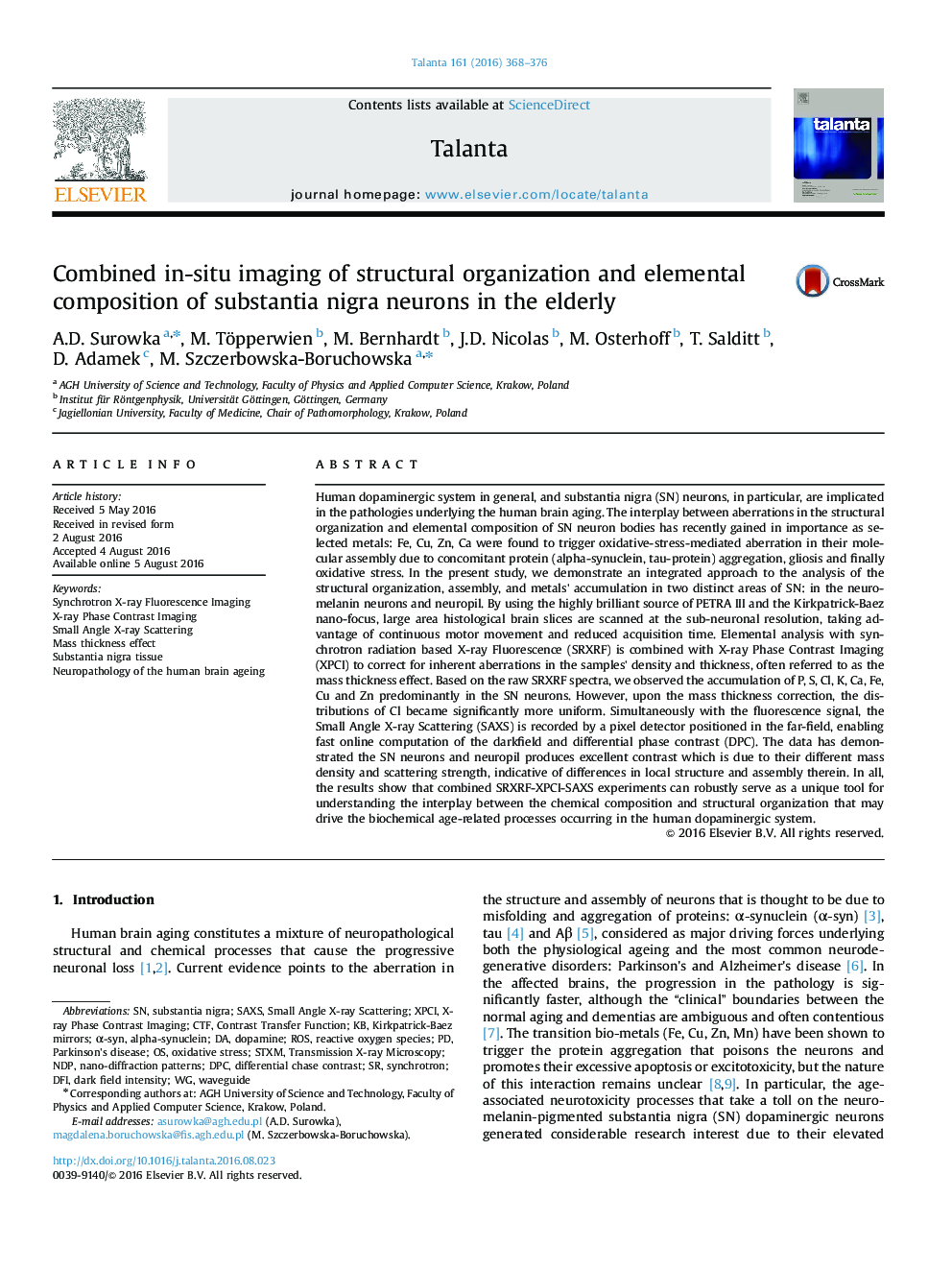| کد مقاله | کد نشریه | سال انتشار | مقاله انگلیسی | نسخه تمام متن |
|---|---|---|---|---|
| 1241726 | 1495775 | 2016 | 9 صفحه PDF | دانلود رایگان |
• Mass thickness effect poses a major limitation to quantitative imaging by SRXRF .
• Human substantia nigra (SN) neurons and surrounding neuropil are of different mass density.
• X-ray Phase Contrast Imaging allows for determination of the mass densities in SN.
• Small Angle X-ray Scattering enables unraveling the structural properties of the SN tissue.
Human dopaminergic system in general, and substantia nigra (SN) neurons, in particular, are implicated in the pathologies underlying the human brain aging. The interplay between aberrations in the structural organization and elemental composition of SN neuron bodies has recently gained in importance as selected metals: Fe, Cu, Zn, Ca were found to trigger oxidative-stress-mediated aberration in their molecular assembly due to concomitant protein (alpha-synuclein, tau-protein) aggregation, gliosis and finally oxidative stress. In the present study, we demonstrate an integrated approach to the analysis of the structural organization, assembly, and metals’ accumulation in two distinct areas of SN: in the neuromelanin neurons and neuropil. By using the highly brilliant source of PETRA III and the Kirkpatrick-Baez nano-focus, large area histological brain slices are scanned at the sub-neuronal resolution, taking advantage of continuous motor movement and reduced acquisition time. Elemental analysis with synchrotron radiation based X-ray Fluorescence (SRXRF) is combined with X-ray Phase Contrast Imaging (XPCI) to correct for inherent aberrations in the samples’ density and thickness, often referred to as the mass thickness effect. Based on the raw SRXRF spectra, we observed the accumulation of P, S, Cl, K, Ca, Fe, Cu and Zn predominantly in the SN neurons. However, upon the mass thickness correction, the distributions of Cl became significantly more uniform. Simultaneously with the fluorescence signal, the Small Angle X-ray Scattering (SAXS) is recorded by a pixel detector positioned in the far-field, enabling fast online computation of the darkfield and differential phase contrast (DPC). The data has demonstrated the SN neurons and neuropil produces excellent contrast which is due to their different mass density and scattering strength, indicative of differences in local structure and assembly therein. In all, the results show that combined SRXRF-XPCI-SAXS experiments can robustly serve as a unique tool for understanding the interplay between the chemical composition and structural organization that may drive the biochemical age-related processes occurring in the human dopaminergic system.
Figure optionsDownload as PowerPoint slide
Journal: Talanta - Volume 161, 1 December 2016, Pages 368–376
